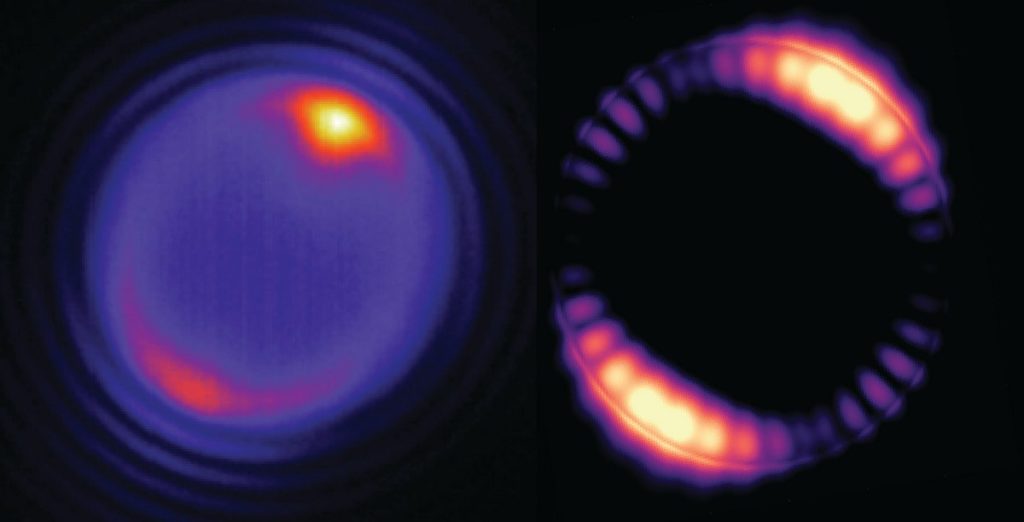
An international team of researchers led by scientists at the Molecular Foundry have found a way to convert nanoparticle-coated microscopic plastic beads into lasers smaller than red blood cells. These microlasers, which convert infrared light into light at higher frequencies, are among the smallest continuously emitting lasers of their kind ever reported and can constantly and stably emit light for hours at a time, even when submerged in biological fluids such as blood serum. The innovation opens up the possibility for imaging or controlling biological activity with infrared light, and for the fabrication of light-based computer chips.
Computational models had previously predicted that thulium-doped nanoparticles exposed to infrared laser light at a specific frequency could emit light at a higher frequency than this infrared light in a counterintuitive process known as “upconversion.” Researchers had since noticed that polystyrene beads coated with Thulium-doped upconverting nanoparticles emitted unexpectedly bright light at very specific wavelengths.
The periodic bright emissions are a light-based analog to so-called “whispering gallery” acoustics that can cause sound waves to bounce along the walls of a circular room so that even a whisper can be heard on the opposite side of the room. In this study, the researchers found that when an infrared laser excites the thulium-doped nanoparticles coated on the surface of the beads, the light emitted by the nanoparticles can bounce around the inner surface of the bead just like whispers bouncing along walls.
Light can make thousands of trips around the circumference of the microsphere in a fraction of a second, causing some frequencies of light to interact (or “interfere”) with themselves to produce brighter light while other frequencies cancel themselves out. When the intensity of light traveling around these beads reaches a certain threshold, the light can stimulate the emission of more light with the exact same color, and that light, in turn, can stimulate even more light. This positive feedback loop – the basis for all lasers – produces intense light at a very narrow range of wavelengths in the beads.
Angel Fernandez-Bravo, a Postdoc at the Foundry and the study’s lead author, found that when he exposed the beads to an infrared laser with enough power the beads turned into upconverting lasers, with higher frequencies than the original laser. He also found that beads could produce laser light at the lowest powers ever recorded for upconverting nanoparticle-based lasers. Other upconverting nanoparticle lasers operate only intermittently; they are only exposed to short, powerful pulses of light because longer exposure would damage them. In this case, researchers found that their microlasers performed stably after five hours of continuous use both in air and in biological media.
Researchers are also exploring how to carefully tune the output light from the continuously emitting microlasers by simply changing the size and composition of the beads. And they have used a robotic system at the Molecular Foundry known as WANDA (Workstation for Automated Nanomaterial Discovery and Analysis) to combine different dopant elements and tune the nanoparticles’ performance.
The researchers also noted that there are many potential applications for the microlasers, such as in controlling the activity of neurons or optical microchips, sensing chemicals, and detecting environmental and temperature changes.

